Editor Talks | Indexnewspaper
editor talks | paula v. álvarez + davide t. ferrando
Indexnewspaper is an architecture magazine founded and edited by Amélia Brandão Costa and Rodrigo da Costa Lima: two young and hyperactive architects based in Porto, where a part from printing Indexnewspaper they also run their own practice and organize the well-known summer school Porto Academy, which gathers every year at the FAUP some of the most interesting names of contemporary architecture. Theirs, is a little cheap magazine (each issue of Indexnewspaper is 48 pages long and costs 3,5 euros) filled with an extremely rigorous selection of inspiring contents, which make this editorial project occupy a particular position in the actual frame of architectural communication. Its interviews, essays and projects, in fact, all seem to stem from the editors’ intention to bring the readers back to some of the “fundamentals” of architecture, and more specifically to those qualities that the Porto School has become internationally known for pursuing. Far from looking at their roots with nostalgia, nevertheless, Amélia and Rodrigo dig into the present with a demanding but inequivocally fresh touch, which allows them to keep together with great coherence architectural narratives coming from very different places. DTF
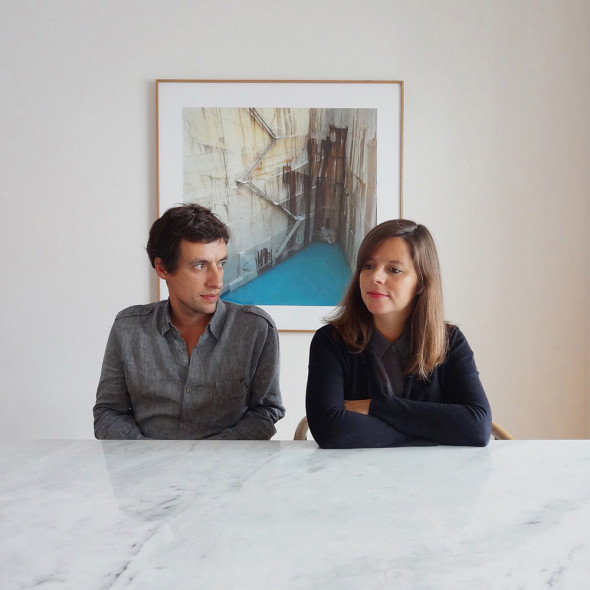
PAULA V. ÁLVAREZ + DAVIDE T. FERRANDO: Indexnewspaper is a new publishing project brought to life in the context of an economic crisis that affects both architecture and publishing. In the editorial statement that opens your first issue you give a hint about your position in this situation, pointing at your desire for change as a driver for the project. Could you tell us more about the changes you were envisioning and the reasons that led you to undertake this project? Is there a specific “void” that you want to fill through this new magazine?
AMÉLIA BRANDÃO COSTA + RODRIGO DA COSTA LIMA: Our first editorial statement is the reflection of the time we were living when we launched Indexnewspaper. By then, everything was questioned and maybe today still is… Almost two years before, we were invited to be editors of an editorial project that was running to an end. During that time we prepared some material that we thought it would be a shame not to publish and share with other people.
We didn’t know anything about paper, printing, distribution or even fonts at the time. The sentence ‘if you can’t convince them, confuse them’ is one of the findings we came across during the process of choosing the right font to use and we used it as our motto to release Indexnewspaper. We find it very contemporary and deeply connected with the situation we were living where everything was new to us. It’s kind of non-sense and very ironic. We like it very much.
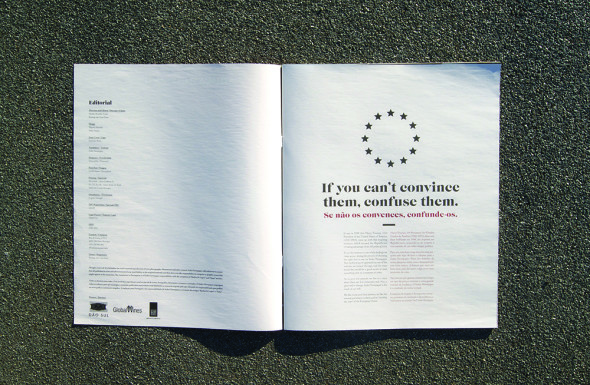 Indexnewspaper #1: editorial
Indexnewspaper #1: editorial
Indexnewspaper was and still is the result of our will but it is especially the result of pure passion. We believe that most of the books and magazines we read also are. It’s not possible to make a book without passion.
Indexnewspaper is not pointing or proposing anything. We do not want to be ‘protagonists’ of something. We didn’t and still don’t pretend to make any kind of statement with this. We do not want to evangelize and we think that all kinds of intellectual manifestations are important to be published or shown in order to promote discussion.
P.A.: Despite its clear international focus, your project is extremely personal — I would say almost biographical. You show no interest in mapping the diversity of attitudes and the continuous exploration of new forms of practice that characterizes the contemporary scenario; by contrast, you rather concentrate on a certain way of doing and how to present it. While being so selective may indeed be partial, I think this is a smart choice in a cultural context in which availability of massive information makes the way contents are presented extremely valuable. For instance, you include already published projects that can be easily found on the Internet, but the way you put them in the center of the magazine — preceded by opening interviews and introduction to the work of practitioners and followed by a final essay stepping out of the profession — brings something different. Could you comment on this editorial procedure?
A.B. + R.D.: Nowadays, people who read books or magazines don’t look for the information itself. They keep on reading books and magazines because of the physical experience that involves it and also for the editorial criteria. If it was only for the content people would just read on laptops, I-Pads, etc…The pleasure of reading will keep books alive.
Back to Indexnewspaper, it is in fact very personal. The name as well as the sections are very generic and that gives us the editorial flexibility to publish whatever we want. Indexnewspaper is focused on authorship. We publish independent and non compromised authors. We don’t look for inventive authors or solutions. We look for authors that work deeply on their interests according to the discipline of architecture.
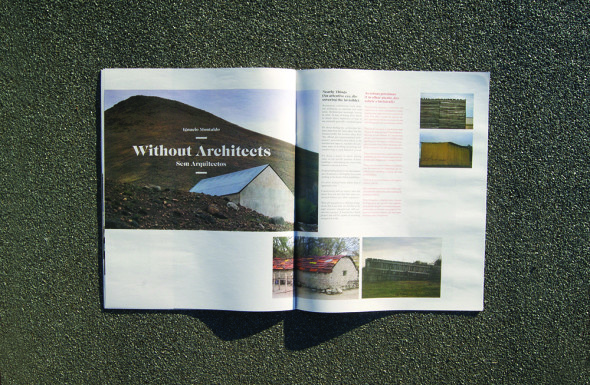
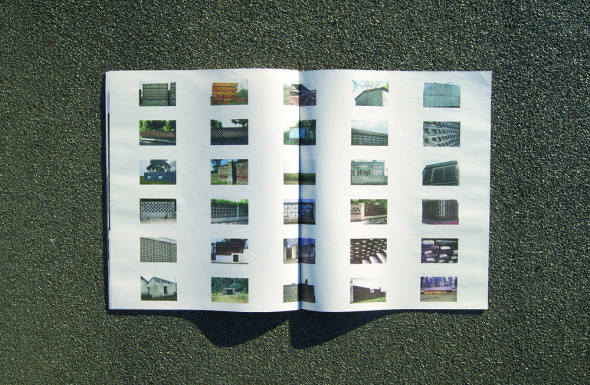 Ignacio Montaldo’s essay Without Architects published on Indexnewspaper #1
Ignacio Montaldo’s essay Without Architects published on Indexnewspaper #1
P.A.: In the past few years, the crisis situation has triggered a greater awareness of the responsibility architects have in relation to many social and environmental issues and an increased focus to the built environment as a complex phenomenon in which architecture is immersed. By contrast, a stronger commitment to architecture as “know-how” to rediscover has recently emerged. It is my impression that Indexnewspaper is stressing this second point; its pages seem to claim that social and cultural commitments can also be channeled through certain formal and constructive decisions that involve an ethical component—more efficient attitude towards budgets, careful material policies, attention to ecological and cultural heritage, etc. In this regard, I am interested in the ambiguity implicit in the final essay that closes every issue. Without sacrificing talking about buildings, these pieces show “exemplary” procedures developed outside the professional field, although seen through architecture’s lens. Take Ignacio Montaldo’s piece on the architecture without architects displayed in suburban and rural areas, filtered from the point of view of material and building practices. Why this sharp focus on ‘building’, even without architects?
A.B. + R.D.: The purpose of Architecture is to conceive space. The know-how to build is a main issue for the architect’s education. Structure, geometry, matter, and emotion can make architecture become beautiful, and beauty is also an issue. We are not interested in the elements of architecture taken separately, but rather in the relationship they establish between them.
We appreciate the fact of reducing architecture to its essence but that has nothing to do with ethics. The example of Ignacio Montaldo’ s essay reflects the watchful eye of the architect towards what surrounds him, as the vernacular way of doing is an example that architecture always reinvents and transforms, most of the times trying to reach efficient ways of construction. We believe that economy is related to ethics in architecture but when people use it in a political or purely aesthetic way, it’s not so fascinating. The same goes with ecology. Economy has much more to do with civism.
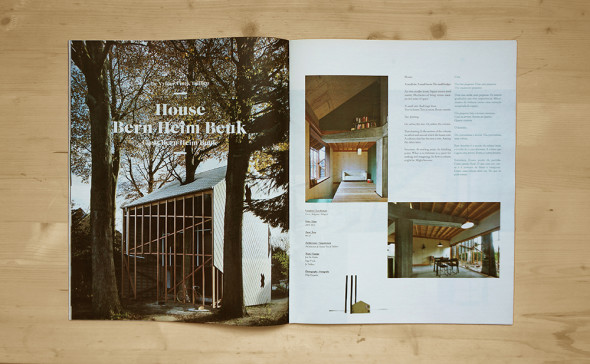 Architecten de Vylder Vinck Taillieu’s House Bern Heim Beuk, published in Indexnewspaper #2
Architecten de Vylder Vinck Taillieu’s House Bern Heim Beuk, published in Indexnewspaper #2
P.A. + D.F.: The site or context where architecture is produced does not seem to be a priority for Indexnewpaper; however Switzerland and Portugal are very present in your pages, also Japan is, up to the point of revealing some shared sensitivity. So construction, formal and material procedures guided by economy of means, which is not necessarily synonymous with “low cost ” techniques. The crisis has pushed up the value of these procedures, however they are timeless and valid techniques, regardless of economic background; in fact we could say they are rooted in the best tradition of Portuguese architecture. Do you feel there is something specifically Portuguese you are committed to? Has your architecture school influenced you in conceiving this magazine? If so, in what way?
A.B. + R.D.: We have many influences and context is certainly a very important theme to us, although we think that if you want to concentrate on just one theme you are forced to dismiss others, reducing the scope of your investigation. So no, we are not committed to anything specifically. The influences may come just from the fact that we were raised next to the school or even just from being Portuguese. We cannot identify them as they naturally appear with no intention. We also think that you should not compromise your ideas with what you already know: independency is something very dear to us.
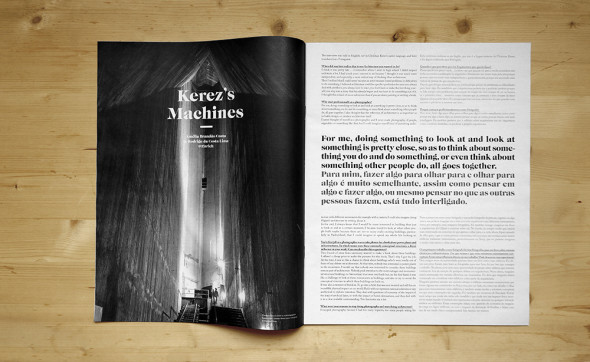 Interview to Christian Kerez published on Indexnewspaper #3
Interview to Christian Kerez published on Indexnewspaper #3
D.F.: Both in terms of the relevance of their content and of the number of pages they occupy, the interviews seem to be the central contribution of Index, around which all the other articles gravitate. This editorial strategy, which reminds me of the well-oiled format of El Croquis, brings attention back to the theme of authoriality, and it does it in a historical period in which the role of the architect as author, on one side, is being questioned in multiple ways (let’s just think of the relevance that terms such as “participation”, “self-construction”, “3d printing” or “open source” have in contemporary discourse), and, on the other side, is being subject to a process of commodification by the real estate market. What is your position on this topic? Why do you think authoriality is still relevant today?
A.B. + R.D.: Authorship is and will always be what moves people. It is not ‘pride’ or ‘ambition’ but the simple will to do something. We believe that Authors have to be challenged so that they can go deep in their interests. Of course, when we say ‘authors’, we are not talking about craftsmans but rather a group of people that work/conceive/produce/think together. We are very much interested in personalities and that’s why in our interviews we cross many thematics. Our interviews are always a bit biographical, as we find it interesting to put all that information together and to try to find hidden meanings… we are interested in the complete package and not just in the result.
D.F.: Another theme that is implicitly brought to the fore by Index is that of “identity”: a word that appears in Olgiati’s, Mateus’ and Kerez’s interviews; an idea that stands behind Montaldo’s and Delory’s photographical essays; and an impression given by the overall projects selection, which apparently aims at defining some sort of transnational way (Portuguese/Swiss/Japanese?) of thinking and doing architecture. Do you think that “identity” is still a relevant theme for contemporary architectural discourse? What kind of identity are you trying to build through Index (if you are trying to build one)?
A.B. + R.D.: We find identity crucial to understand the quality of the result. Identity is what distinguishes things and people. Analyzing it, you can identify a route or a meaning and evaluate its originality, potency or even legacy. We think of Indexnewspaper as a generic publication where the criteria is very personal and that, together with the kindness of our guests, results in a very unique magazine, with a plus given by its paper characteristics and format. Indexnewspaper’s identity is just understandable when you put all this together.
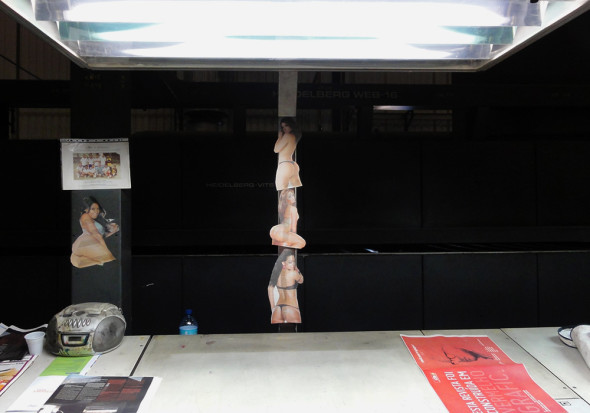
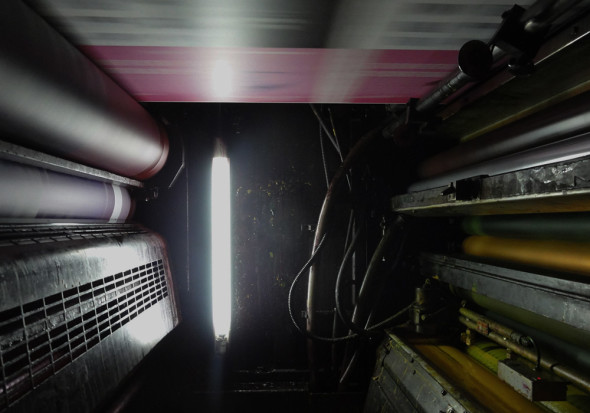
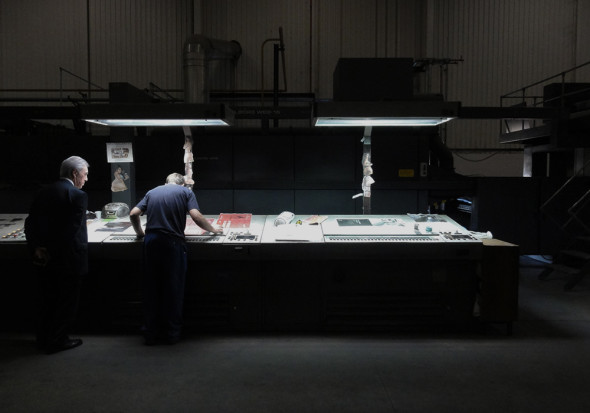 Stills from Indexnewspaper’s production process
Stills from Indexnewspaper’s production process
P.A.: You have chosen a newspaper editorial production, which allows large runprint, generous images and drawings, low price. I feel curious about why did you come up with this format, the publications you read and the influences on you.
A.B. + R.D.: We tried to make something that is not finished, something that you are not able to correct or control, a brutal and super fast production in contrast with the work of some architects that are obsessed by perfection. With newspaper production you have very heavy machinery for a super light material, too long editing time and a super fast production…. It’s easy to get in love with these paradoxes. Regarding our sources, we are not very loyal to magazines, books or blogs. We essentially follow people or themes that seduce us and we try to read about them, observe and experiment buildings as much as we can.
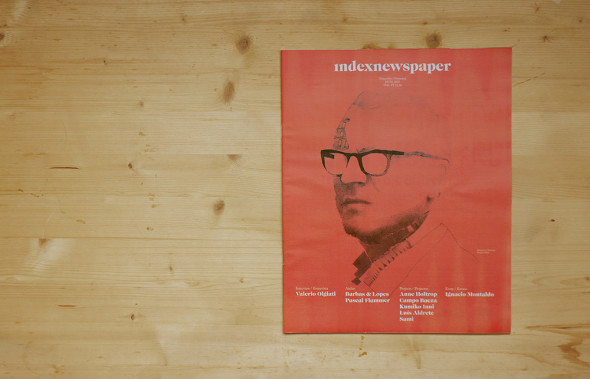 Cover of Indexnewspaper #1
Cover of Indexnewspaper #1
P.A. + D. F.: In Spain, the newspaper model was first introduced in architectural publications with Pasajes de Arquitectura y Crítica, a revolutionary project at a time in which a luxurious publication as El Croquis was the most popular publication in architecture. Internet was not running then, and Pasajes was essential to bring to students contemporary and emergent proposals as well as a broader range of concerns regarding architecture discipline and the role of practitioners. Besides, it gave voice to many emergent architects who did not have the same chance to be published or heard that they now have with the Internet and the development of ICTs. In comparison with El Croquis, Pasajes showed a focus on design strategies and discourses rather than the author’s work and signature, an approach later followed by magazines as a+t, among others. We feel you are trying to seek a balance between these two disparate positions: design strategies / procedures and authorship. Could you comment on your position here? What profile do Indexnewspaper’s contributors have?
A.B. + R.D.: We are much more interested on authors than strategies. We are focused on publishing people that are passionate about what they do and that aim at producing excellence and significance. Our very personal involvement and the quality of our guests results in a very heterogeneous audience. Our readers come from more than 30 different countries, and they are not necessarily related with architecture: also designers follow Indexnewspaper.
We work on Indexnewspaper for pleasure, and we do it to maintain ourselves aware of things that stimulate us to keep on learning. We are not producing Indexnewspaper for our readers as it would be impossible to please them all.
P.A. + D. F.: Thanks for your time and best wishes for your project!
Madrid/Porto/Seville — 2015
Read the interview on Vibok Works
Questo sito usa Akismet per ridurre lo spam. Scopri come i tuoi dati vengono elaborati.

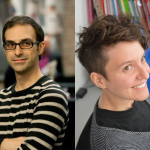






Lascia un commento